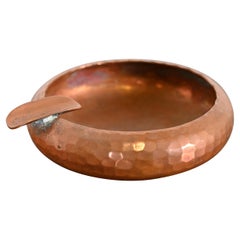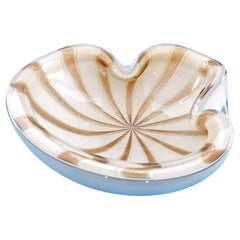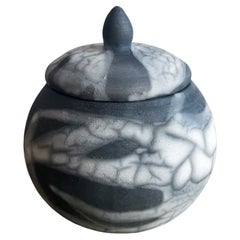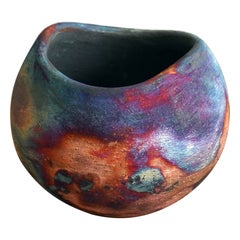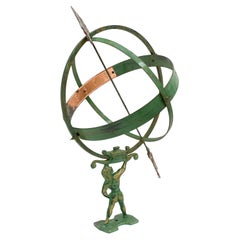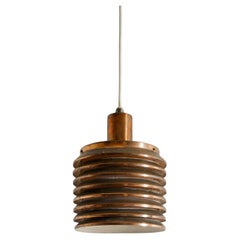Copper Furniture
Early 20th Century American Arts and Crafts Copper Furniture
Copper
Mid-20th Century Italian Mid-Century Modern Copper Furniture
Gold Leaf, Copper
2010s Malaysian Modern Copper Furniture
Copper
2010s Malaysian Modern Copper Furniture
Copper
20th Century Swedish Copper Furniture
Copper, Iron
1950s Swedish Scandinavian Modern Vintage Copper Furniture
Copper
2010s British Industrial Copper Furniture
Brass, Bronze, Copper, Steel, Stainless Steel, Metal
17th Century Italian Baroque Antique Copper Furniture
Copper
20th Century Copper Furniture
Silver Plate, Copper
1960s Italian Mid-Century Modern Vintage Copper Furniture
Copper
Late 19th Century Turkish Moorish Antique Copper Furniture
Metal, Copper
Early 20th Century French Arts and Crafts Copper Furniture
Brass, Copper
1960s Scandinavian Scandinavian Modern Vintage Copper Furniture
Metal, Copper
20th Century American Copper Furniture
Copper
17th Century Japanese Edo Antique Copper Furniture
Copper, Gold
2010s Malaysian Modern Copper Furniture
Copper
Early 20th Century Tibetan Tibetan Copper Furniture
Copper
2010s Copper Furniture
Copper
1920s English Art Deco Vintage Copper Furniture
Brass, Copper
Early 20th Century English Arts and Crafts Copper Furniture
Copper
Early 20th Century Moroccan Moorish Copper Furniture
Metal, Brass, Bronze, Copper
Early 1900s Arts and Crafts Antique Copper Furniture
Copper
Early 20th Century American Arts and Crafts Copper Furniture
Copper
Early 19th Century English George III Antique Copper Furniture
Copper
1930s Finnish Mid-Century Modern Vintage Copper Furniture
Copper
1940s Japanese Mid-Century Modern Vintage Copper Furniture
Bronze, Enamel, Copper
1940s Argentine Mid-Century Modern Vintage Copper Furniture
Metal, Tin, Copper, Bronze
1970s American Vintage Copper Furniture
Brass, Copper
1940s Belgian Arts and Crafts Vintage Copper Furniture
Copper
21st Century and Contemporary Ukrainian Organic Modern Copper Furniture
Copper
1960s Danish Mid-Century Modern Vintage Copper Furniture
Bronze, Copper
Late 19th Century Japanese Meiji Antique Copper Furniture
Copper, Enamel
17th Century European Baroque Antique Copper Furniture
Copper
Late 19th Century Japanese Meiji Antique Copper Furniture
Enamel, Copper
1930s American Art Deco Vintage Copper Furniture
Brass, Copper
1970s Belgian Mid-Century Modern Vintage Copper Furniture
Copper
2010s Polish Post-Modern Copper Furniture
Copper
Early 1900s English Arts and Crafts Antique Copper Furniture
Copper
2010s Malaysian Modern Copper Furniture
Copper
2010s Malaysian Modern Copper Furniture
Copper
Early 20th Century European Arts and Crafts Copper Furniture
Alabaster, Brass, Copper
1980s Chinese Vintage Copper Furniture
Copper
19th Century Japanese Meiji Antique Copper Furniture
Enamel, Copper
20th Century American Mid-Century Modern Copper Furniture
Metal, Copper
1910s French Art Nouveau Vintage Copper Furniture
Brass, Copper
Late 20th Century Dutch Brutalist Copper Furniture
Slate, Copper
21st Century and Contemporary Danish Mid-Century Modern Copper Furniture
Copper
1970s Italian Mid-Century Modern Vintage Copper Furniture
Copper
2010s Malaysian Modern Copper Furniture
Copper
Early 20th Century American Arts and Crafts Copper Furniture
Copper
1930s French Art Deco Vintage Copper Furniture
Aluminum, Copper
1930s European Art Deco Vintage Copper Furniture
Copper
18th Century Dutch Louis XV Antique Copper Furniture
Brass, Copper, Wrought Iron
2010s American Mid-Century Modern Copper Furniture
Brass, Bronze, Copper, Enamel, Chrome, Nickel, Aluminum
Late 19th Century Japanese Meiji Antique Copper Furniture
Copper, Enamel
Early 20th Century French Art Nouveau Copper Furniture
Bronze, Copper
21st Century and Contemporary American Post-Modern Copper Furniture
Copper
2010s Malaysian Modern Copper Furniture
Copper
21st Century and Contemporary Malaysian Modern Copper Furniture
Copper
1970s American Mid-Century Modern Vintage Copper Furniture
Brass, Bronze, Copper
Antique, New and Vintage Copper Furniture
From cupolas to cookware and fine art to filaments, copper metal has been used in so many ways since prehistoric times. Today, antique, new and vintage copper coffee tables, mirrors, lamps and other furniture and decor can bring a warm metallic flourish to interiors of any kind.
In years spanning 8,700 BC (the time of the first-known copper pendant) until roughly 3,700 BC, it may have been the only metal people knew how to manipulate.
Valuable deposits of copper were first extracted on the Mediterranean island of Cyprus around 4,000 BC — well before Europe’s actual Bronze Age (copper + tin = bronze). Tiny Cyprus is even credited with supplying all of Egypt and the Near East with copper for the production of sophisticated currency, weaponry, jewelry and decorative items.
In the 15th, 16th and 17th centuries, master painters such as Leonardo da Vinci, El Greco, Rembrandt and Jan Brueghel created fine works on copper. (Back then, copper-based pigments, too, were all the rage.) By the late 19th and early 20th centuries, decorative items like bas-relief plaques, trays and jewelry produced during the Art Deco, Arts and Crafts and Art Nouveau periods espoused copper. These became highly valuable and collectible pieces and remain so today.
Copper’s beauty, malleability, conductivity and versatility make it perhaps the most coveted nonprecious metal in existence. In interiors, polished copper begets an understated luxuriousness, and its reflectivity casts bright, golden and earthy warmth seldom realized in brass or bronze. (Just ask Tom Dixon.)
Outdoors, its most celebrated attribute — the verdigris patina it slowly develops from exposure to oxygen and other elements — isn’t the only hue it takes. Architects often refer to shades of copper as russet, ebony, plum and even chocolate brown. And Frank Lloyd Wright, Renzo Piano and Michael Graves have each used copper in their building projects.
Find antique, new and vintage copper furniture and decorative objects on 1stDibs.
